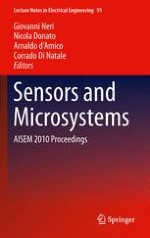
2011 | OriginalPaper | Buchkapitel
1. Odorant Detection and Discrimination in the Olfactory System
verfasst von : Simone Pifferi, Anna Menini
Erschienen in: Sensors and Microsystems
Verlag: Springer Netherlands
Aktivieren Sie unsere intelligente Suche, um passende Fachinhalte oder Patente zu finden.
Wählen Sie Textabschnitte aus um mit Künstlicher Intelligenz passenden Patente zu finden. powered by
Markieren Sie Textabschnitte, um KI-gestützt weitere passende Inhalte zu finden. powered by